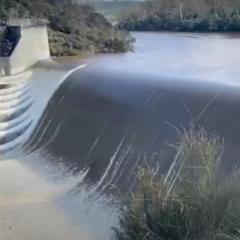Several coastal ecosystems—most notably mangroves and tidal marshes—exhibit biogenic feedbacks that are facilitating adjustment to relative sea-level rise (RSLR), including the sequestration of carbon and the trapping of mineral sediment1. The stability of reef-top habitats under RSLR is similarly linked to reef-derived sediment accumulation and the vertical accretion of protective coral reefs2. The persistence of these ecosystems under high rates of RSLR is contested3. Here we show that the probability of vertical adjustment to RSLR inferred from palaeo-stratigraphic observations aligns with contemporary in situ survey measurements. A deficit between tidal marsh and mangrove adjustment and RSLR is likely at 4 mm yr−1 and highly likely at 7 mm yr−1 of RSLR. As rates of RSLR exceed 7 mm yr−1, the probability that reef islands destabilize through increased shoreline erosion and wave over-topping increases. Increased global warming from 1.5 °C to 2.0 °C would double the area of mapped tidal marsh exposed to 4 mm yr−1 of RSLR by between 2080 and 2100. With 3 °C of warming, nearly all the world’s mangrove forests and coral reef islands and almost 40% of mapped tidal marshes are estimated to be exposed to RSLR of at least 7 mm yr−1. Meeting the Paris agreement targets would minimize disruption to coastal ecosystems.
Widespread retreat of coastal habitat is likely at warming levels above 1.5 °C
31 Aug 2023
Latest
-
-
Observations of the Trevallyn Dam Spillway, Launceston
23 September 2024



